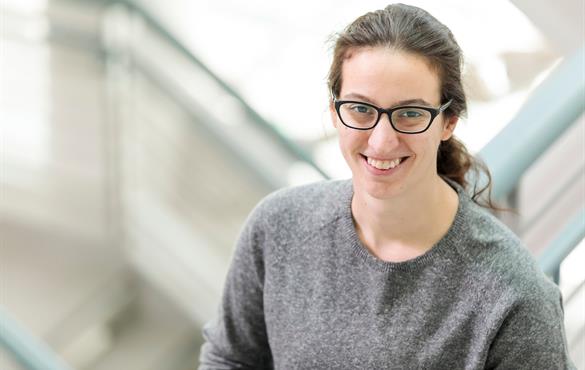Q&A with MEng alumna Amy Mirro
Alumna Amy Mirro earned a Master's in Engineering in Biomedical Innovation in 2017, and since then, she's helped to launch a startup out of the School of Medicine at Washington University in St. Louis. We spoke with her about her work and how the MEng-BMI helped to prepare her for a career in the industry

Why did you decide to pursue the MEng-BMI?
I chose the MEng program over the MS or going to work because I wanted to get an idea of what the industry is like and what building a product and getting it to market is really like.
My plan was to go through [the program] and evaluate at the end, because I do enjoy research. I did research as an undergrad. I had entertained the idea of getting a PhD and working in a lab versus doing something more industrial. So, I did the 12 months and then evaluated which I really liked.
What was your experience in the program like?
I had a professor in undergrad who used to say the best-engineered solutions are rarely implemented because there are so many other factors, and it's true. With an engineering background, you learn CAD (computer-aided design) and how to build circuits and how to make sure you pick the right material for a specific task. But if you come up with something new right out of undergrad, you’d have no idea how to get patent protection on it, write a business plan for it or get startup funding.
The MEng program fills in those gaps. The program is helpful if you’re interested in learning how things get to the market, but I also think that learning about business and marketing helps inform your design decisions if you look at those things earlier in the design process.
Can you explain that further?
One thing we do early is a patent search. So, if you say “oh, I have this great new idea,” but GE has a patent totally locking up that space, then you might need to pivot. We also do a market assessment; so, if this is not truly something a lot of people need, you learn early on that it’s not something you can make a product out of.
The program has an iterative approach. You consider first: Is there space in the IP landscape? Is there a market for it? Let’s do some design testing, let’s do more rigorous assessment and come back to it.
Did the MEng help you build relationships and network?
The person who hired me was one of the people who I shadowed over the summer. He hired me because he was trying to spin out this startup. He said, “We’re going to be doing these patents, and we need an engineer. That’s what we need most desperately, but we’re going to be doing all these other things.” So, the fact that I have this broader skill set is why I got the job.
What can you say about the startup you’re working with now?
My PI does a lot of MR imaging, and the MRI images are distorted by head motion. Particularly because he scans a lot of kids, we get a lot of useless MRIs because they’re wiggling around.
No one really monitored motion of the kids; they just put them in the scanner and hoped for the best. What we did was a software-based solution that shows you, in real-time, how much the kid is moving while in the scanner. The idea of real-time quality control is pretty straightforward but not something anyone ever thought to do. If you need 10 minutes of data, it’ll give you a check when you have 10 minutes of good data.
Where do you see yourself in five or 10 years?
I’m probably going to stay with this startup for a while at least until we get going. It depends; I’m really passionate about developing new products and getting them into market. I enjoy building products and moving them to the market, in particular, doing testing and early feasibility analysis. Hopefully, I’ll still be doing that in five or 10 years.



